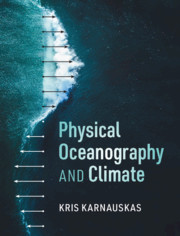Refine search
Actions for selected content:
37556 results in Cambridge Textbooks
Part II - Copyright, designs and related rights
-
- Book:
- Australian Intellectual Property Law
- Published online:
- 12 May 2020
- Print publication:
- 06 May 2020, pp 23-24
-
- Chapter
- Export citation
12 - Patents for inventions: exploitation, infringement and revocation
- from Part III - Confidential information, patents and plant breeder’s rights
-
- Book:
- Australian Intellectual Property Law
- Published online:
- 12 May 2020
- Print publication:
- 06 May 2020, pp 440-492
-
- Chapter
- Export citation
14 - Passing off
- from Part IV - Trade marks
-
- Book:
- Australian Intellectual Property Law
- Published online:
- 12 May 2020
- Print publication:
- 06 May 2020, pp 529-568
-
- Chapter
- Export citation
3 - Copyright: subsistence
- from Part II - Copyright, designs and related rights
-
- Book:
- Australian Intellectual Property Law
- Published online:
- 12 May 2020
- Print publication:
- 06 May 2020, pp 48-74
-
- Chapter
- Export citation
11 - Patents for inventions: allocation of rights and ownership, the Register and dealings
- from Part III - Confidential information, patents and plant breeder’s rights
-
- Book:
- Australian Intellectual Property Law
- Published online:
- 12 May 2020
- Print publication:
- 06 May 2020, pp 400-439
-
- Chapter
- Export citation
9 - Patents for inventions: introduction
- from Part III - Confidential information, patents and plant breeder’s rights
-
- Book:
- Australian Intellectual Property Law
- Published online:
- 12 May 2020
- Print publication:
- 06 May 2020, pp 264-290
-
- Chapter
- Export citation
Part IV - Trade marks
-
- Book:
- Australian Intellectual Property Law
- Published online:
- 12 May 2020
- Print publication:
- 06 May 2020, pp 527-690
-
- Chapter
- Export citation
Part II - Copyright, designs and related rights
-
- Book:
- Australian Intellectual Property Law
- Published online:
- 12 May 2020
- Print publication:
- 06 May 2020, pp 23-218
-
- Chapter
- Export citation
12 - Patents for inventions: exploitation, infringement and revocation
- from Part III - Confidential information, patents and plant breeder’s rights
-
- Book:
- Australian Intellectual Property Law
- Published online:
- 12 May 2020
- Print publication:
- 06 May 2020, pp 440-492
-
- Chapter
- Export citation
Preface
-
- Book:
- Australian Intellectual Property Law
- Published online:
- 12 May 2020
- Print publication:
- 06 May 2020, pp xxix-xxx
-
- Chapter
- Export citation
Table of statutory instruments
-
- Book:
- Australian Intellectual Property Law
- Published online:
- 12 May 2020
- Print publication:
- 06 May 2020, pp lxxxviii-xc
-
- Chapter
- Export citation
Part III - Confidential information, patents and plant breeder’s rights
-
- Book:
- Australian Intellectual Property Law
- Published online:
- 12 May 2020
- Print publication:
- 06 May 2020, pp 219-526
-
- Chapter
- Export citation
2 - Copyright: introduction
- from Part II - Copyright, designs and related rights
-
- Book:
- Australian Intellectual Property Law
- Published online:
- 12 May 2020
- Print publication:
- 06 May 2020, pp 25-47
-
- Chapter
- Export citation
Part V - Enforcement of rights
-
- Book:
- Australian Intellectual Property Law
- Published online:
- 12 May 2020
- Print publication:
- 06 May 2020, pp 691-692
-
- Chapter
- Export citation
13 - Plant breeder’s rights
- from Part III - Confidential information, patents and plant breeder’s rights
-
- Book:
- Australian Intellectual Property Law
- Published online:
- 12 May 2020
- Print publication:
- 06 May 2020, pp 493-526
-
- Chapter
- Export citation
9 - Patents for inventions: introduction
- from Part III - Confidential information, patents and plant breeder’s rights
-
- Book:
- Australian Intellectual Property Law
- Published online:
- 12 May 2020
- Print publication:
- 06 May 2020, pp 264-290
-
- Chapter
- Export citation
10 - Patents for inventions: validity
- from Part III - Confidential information, patents and plant breeder’s rights
-
- Book:
- Australian Intellectual Property Law
- Published online:
- 12 May 2020
- Print publication:
- 06 May 2020, pp 291-399
-
- Chapter
- Export citation
10 - Patents for inventions: validity
- from Part III - Confidential information, patents and plant breeder’s rights
-
- Book:
- Australian Intellectual Property Law
- Published online:
- 12 May 2020
- Print publication:
- 06 May 2020, pp 291-399
-
- Chapter
- Export citation

Physical Oceanography and Climate
-
- Published online:
- 04 May 2020
- Print publication:
- 02 April 2020
-
- Textbook
- Export citation

Learning to Research and Researching to Learn
- An Educator's Guide
-
- Published online:
- 02 May 2020
- Print publication:
- 06 April 2020
-
- Textbook
- Export citation
